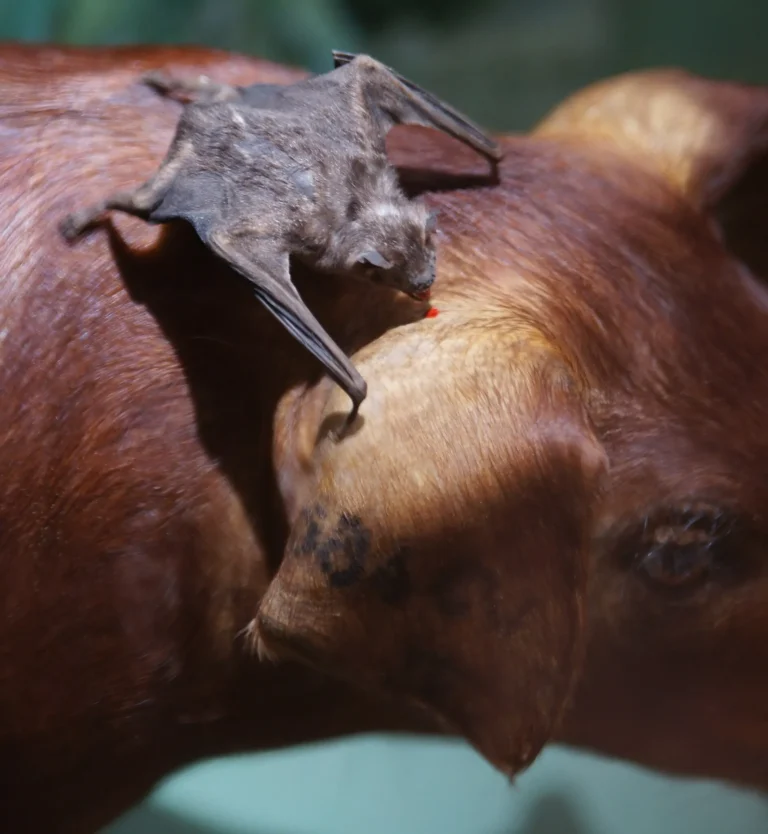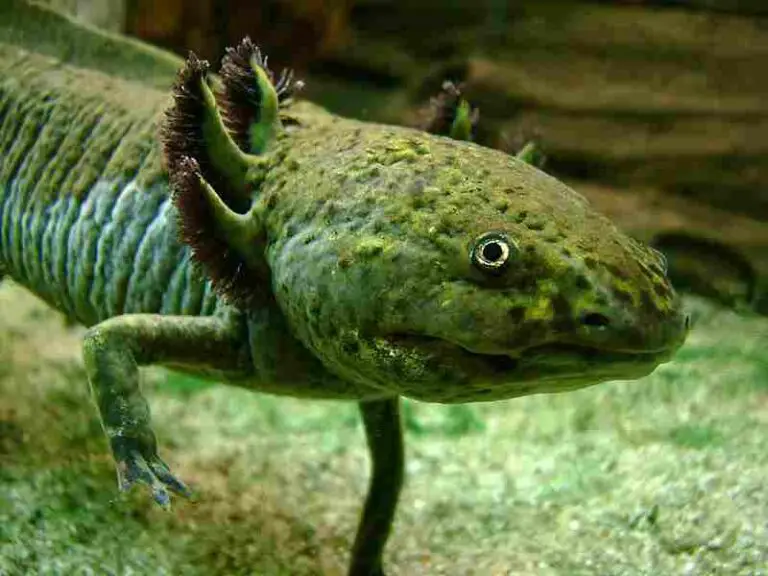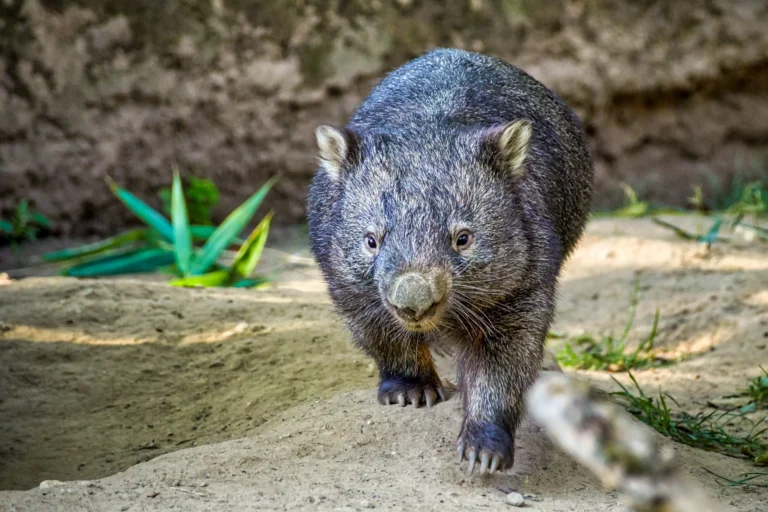Tonkinese Cat Vs Siamese Personality, Price, Overall Comparison
Comparing Tonkinese and Siamese cats reveals a close relationship, with the Tonkinese breed derived as the offspring of Siamese cats. While the two breeds share similarities in appearance, Tonkinese cats exhibit distinct characteristics such as less-prominent fur markings, a smaller yet more muscular stature, and a rounded head. The Tonkinese personality tends to be quieter and less vocal compared to the more talkative nature of Siamese cats. Despite these differences, both breeds are affectionate. The price ranges for Tonkinese and Siamese cats are comparable, with Tonkinese kittens priced between $600 and $1500, and adoption fees ranging from $70 to over $300.
Tonkinese vs Siamese: Navigating Feline Comparisons
I. Genetic Connection:
– Tonkinese cats are offspring derived from Siamese cats, establishing a genetic connection between the two breeds. This shared ancestry contributes to similarities in certain traits.
II. Similar Appearance:
– Tonkinese and Siamese cats share a strikingly similar appearance. However, Tonkinese cats often have less-prominent fur markings, presenting a subtle distinction from the more distinctive markings seen in Siamese cats.
III. Size and Stature:
– Tonkinese cats typically have a smaller yet more muscular stature compared to Siamese cats. The difference in size contributes to a distinct physical presence, with Tonkinese cats often having a more robust build.
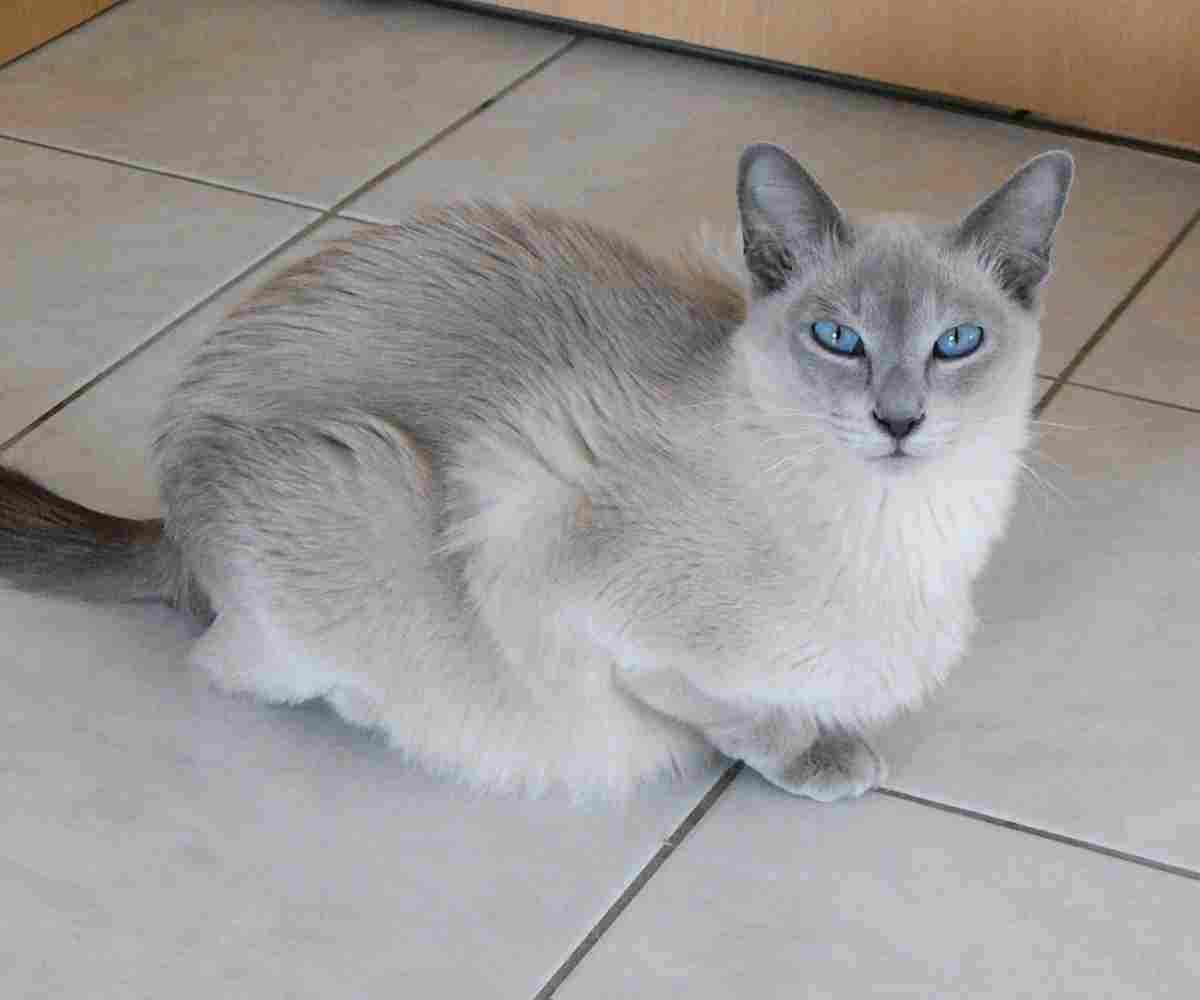
IV. Head Shape:
– The head shape of Tonkinese cats is characterized by being more rounded compared to the sleeker head shape of Siamese cats. This subtle difference in head structure contributes to the overall appearance variance.
V. Vocalization and Personality:
– While both breeds are known for their affectionate nature, Tonkinese cats tend to be quieter and less vocal than their Siamese counterparts. This distinction in personality traits contributes to the unique charm of each breed.
VI. Affectionate Nature:
– Both Tonkinese and Siamese cats share a common trait of being affectionate towards their owners. Despite differences in vocalization and demeanor, both breeds form strong bonds with their human companions.
VII. Price Ranges:
– The price ranges for Tonkinese and Siamese cats are similar, reflecting their comparable status in the feline world. Tonkinese kittens can be priced between $600 and $1500, and adoption fees typically range from $70 to over $300, aligning with the pricing structure for Siamese cats.
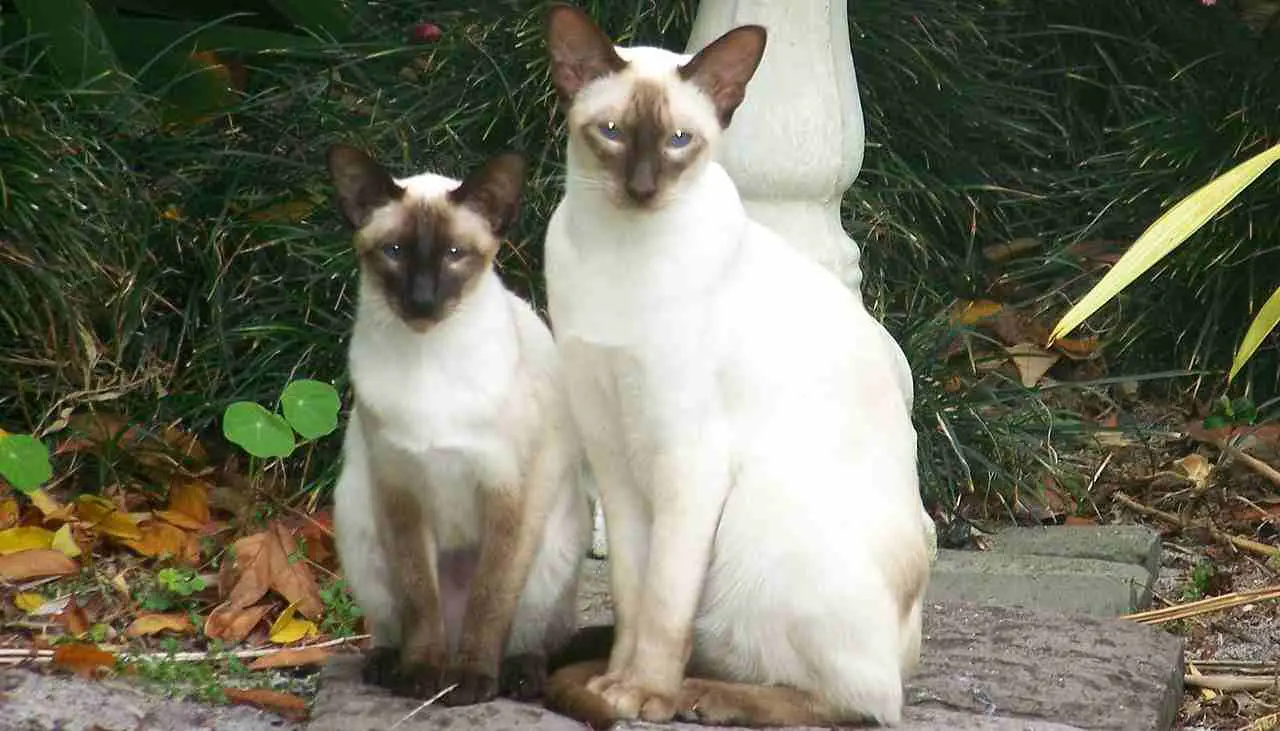
VIII. Appreciating Breed Diversity:
– Understanding the nuances between Tonkinese and Siamese cats allows feline enthusiasts to appreciate the diversity within these breeds. Each cat brings its own unique characteristics, contributing to the rich tapestry of feline companionship.
*Details of Comparison
| Criteria | Tonkinese Cat | Siamese Cat |
| Taxonomy | Family: Felidae
Genus: Felis Species: catus Breed: Tonkinese |
Family: Felidae
Genus: Felis
Species: catus
Breed: Siamese
|
| Appearance | Muscular build, medium-sized, satin-like coat |
Slender, long-bodied, sleek coat
|
| Size | Medium-sized, sturdy build |
Slender, elongated
|
| Weight | Average 6-12 pounds |
Average 5-10 pounds
|
| Personality | Social, playful, vocal |
Highly social, intelligent, vocal
|
| Relative Price/Cost | Moderately priced, influenced by lineage and color |
Varied, influenced by pedigree and color
|
| Grooming Requirements | Low-maintenance short coat, regular care for nails and dental health |
Low-maintenance short coat, routine care for nails and dental health
|
| Health Concerns | Prone to HCM, gingivitis |
Susceptible to respiratory problems, dental issues
|
| Bite Force (PSI) | Average, not extensively documented |
Expected to be proportionate to size
|
| Physical Offensive Advantages | Emphasis on strength |
Emphasis on agility
|
| Physical Defensive Advantages | Rely on physical strength | Rely on agility |
| Speed
(Km/hour or Mile/hour) |
Moderate speed | Quick and agile |
| Agility | Agile with graceful movements |
Extremely agile with acrobatic skills
|
| Senses | Keen senses, well-developed whiskers |
Excellent low-light vision, acute hearing
|
| Overall Physical Capacity | Balanced physical capacity |
Emphasis on agility
|
| Habitat Preference(s) | Adaptable to various indoor environments |
Prefers indoor living, may enjoy limited outdoor access
|
| Tracks | Paw prints with distinct claw marks and broader base |
Paw prints with less distinct claw marks and narrower base
|
| Lifespan | Average 10-16 years |
Average 12-16 years
|
| Natural Mode of Feeding | Carnivorous diet, primarily meat |
Carnivorous diet, preference for fresh meat
|
| Best Food as a Pet | High-quality cat food with protein and nutrients |
Similar dietary requirements to Tonkinese
|
| Intelligence | Intelligent, problem-solving abilities |
Highly intelligent, curious
|
| Social Behavior | Social, forms strong bonds |
Highly social, bonds strongly with owners
|
| Mode of Reproduction | Gives birth to litters of kittens |
Gives birth to litters of kittens
|
| Parental Behavior | Nurturing behavior towards kittens |
Strong maternal instincts, actively cares for kittens
|
| Proximity to Human-Inhabited Areas | Comfortable living in close proximity to humans |
Thrives in human-inhabited areas, enjoys interaction
|
| Behavior Toward Humans | Affectionate, enjoys human company |
Affectionate, may become distressed when left alone
|
| Danger Posed to Humans | Generally not dangerous to humans |
Generally not dangerous to humans
|
| Associated Precautions | Regular veterinary check-ups, preventive care |
Regular veterinary check-ups, preventive care
|
| Conservation Status | Domestic breed, not applicable |
Domestic breed, not applicable
|
1. Taxonomy:
Tonkinese Cat:
Family: Felidae
Genus: Felis
Species: catus
Breed: Tonkinese
Siamese Cat:
Family: Felidae
Genus: Felis
Species: catus
Breed: Siamese
Both Tonkinese and Siamese cats belong to the same family, genus, and species, with their distinction lying in their respective breeds.
2. Appearance:
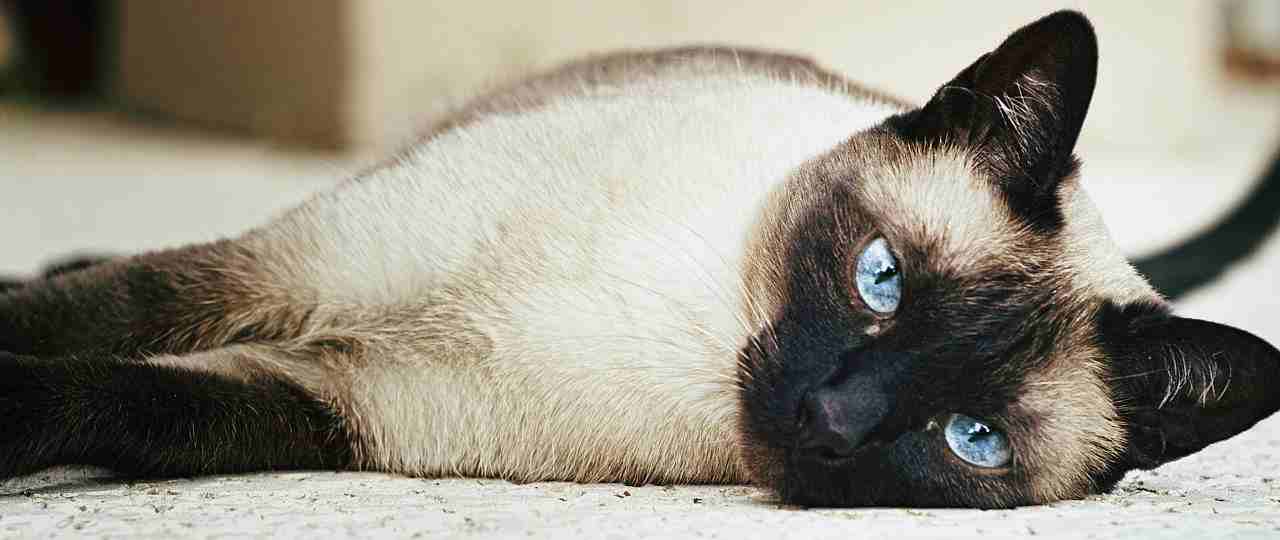
Tonkinese Cat:
Coat: Short, fine, close-lying coat with a satin-like sheen.
Color Points: Mink pattern with color points on the ears, face, paws, and tail.
Eyes: Almond-shaped, aqua-colored eyes.
Body: Muscular, medium-sized, and well-balanced.
Siamese Cat:
Coat: Short, sleek, and close-lying coat.
Color Points: Distinct color points on the ears, face, paws, and tail.
Eyes: Striking blue almond-shaped eyes.
Body: Slender, long-bodied, and graceful.
Comparison: Both exhibit color points and share short coats, but Tonkinese cats have a more muscular build compared to the slender Siamese.
Ecological Implications: Coat colors and body types may have evolved to adapt to different environmental conditions, such as temperature and terrain, aiding in camouflage or thermal regulation.
3. Size:
Tonkinese Cat:
Medium-sized breed with a sturdy build.
Siamese Cat:
Slender, elongated body, and a more delicate build.
Comparison: Tonkinese cats are generally more robust and compact compared to the slender build of Siamese cats.
Ecological Implications: Size differences may reflect adaptations to different ecological niches, with Tonkinese potentially adapted for more varied environments due to their sturdier build.
4. Weight:
Tonkinese Cat:
Average weight ranges from 6 to 12 pounds.
Siamese Cat:
Generally lighter, with an average weight ranging from 5 to 10 pounds.
Comparison: Tonkinese cats tend to be heavier on average compared to Siamese cats.
Ecological Implications: Weight variations may be influenced by the availability and type of prey in their natural habitats, with Tonkinese cats potentially hunting larger prey.
5. Personality:

Tonkinese Cat:
Social, affectionate, and known for being vocal.
Playful and enjoys interactive activities.
Siamese Cat:
Highly social, vocal, and affectionate.
Intelligent and craves human interaction.
Comparison: Both breeds share a sociable and vocal nature, making them suitable for households with active human interaction.
Ecological Implications: Sociable behaviors may have evolved to enhance group cooperation and communication in their natural habitats, aiding in activities like hunting or protecting territory.
6. Relative Price/Cost:
Tonkinese Cat:
Generally, Tonkinese cats are moderately priced, with variations based on factors like lineage, pedigree, and coat color.
Siamese Cat:
Siamese cats can vary in price, influenced by factors such as pedigree, color points, and breeding reputation.
Comparison: Both breeds can have a similar range in prices, influenced by various factors related to their lineage and physical characteristics.
Ecological Implications: Economic factors such as the cost of obtaining these cats may indirectly impact breeding practices, potentially influencing population dynamics within their native regions.
7. Grooming and Maintenance Requirements:
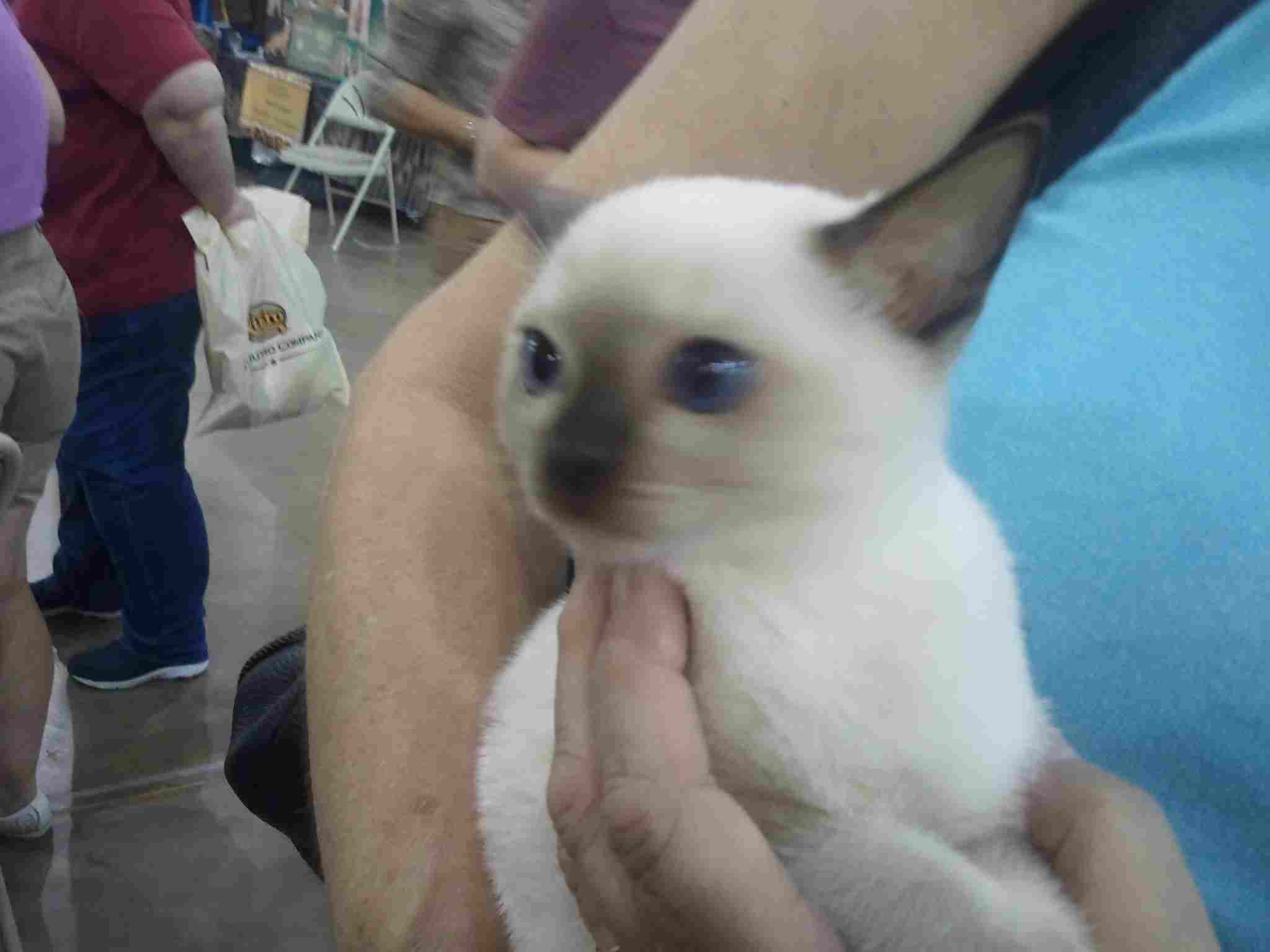
Tonkinese Cat:
Low-maintenance grooming due to the short coat.
Regular nail trimming and dental care are recommended.
Siamese Cat:
Low-maintenance grooming, with a short coat that requires minimal brushing.
Routine nail trimming and dental care are essential.
Comparison: Both breeds have low grooming requirements, but regular care for nails and dental health is essential for maintaining overall well-being.
Ecological Implications: Grooming behaviors might have evolved to optimize self-care in their natural habitats, potentially influenced by factors such as climate and available resources.
8. Health Concerns:
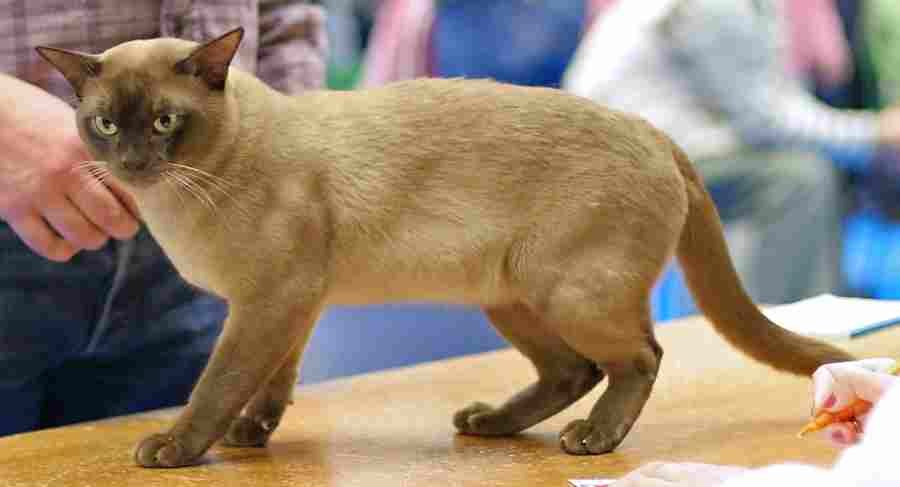
Tonkinese Cat:
Prone to certain genetic conditions like hypertrophic cardiomyopathy (HCM) and gingivitis.
Siamese Cat:
Susceptible to health issues such as respiratory problems and dental issues.
Comparison: Both breeds have specific health concerns, emphasizing the importance of regular veterinary check-ups and preventative care.
Ecological Implications: Genetic predispositions to certain health issues may reflect adaptations or constraints in their natural environments, influencing the prevalence of these conditions within the populations.
9. Bite Force (PSI):
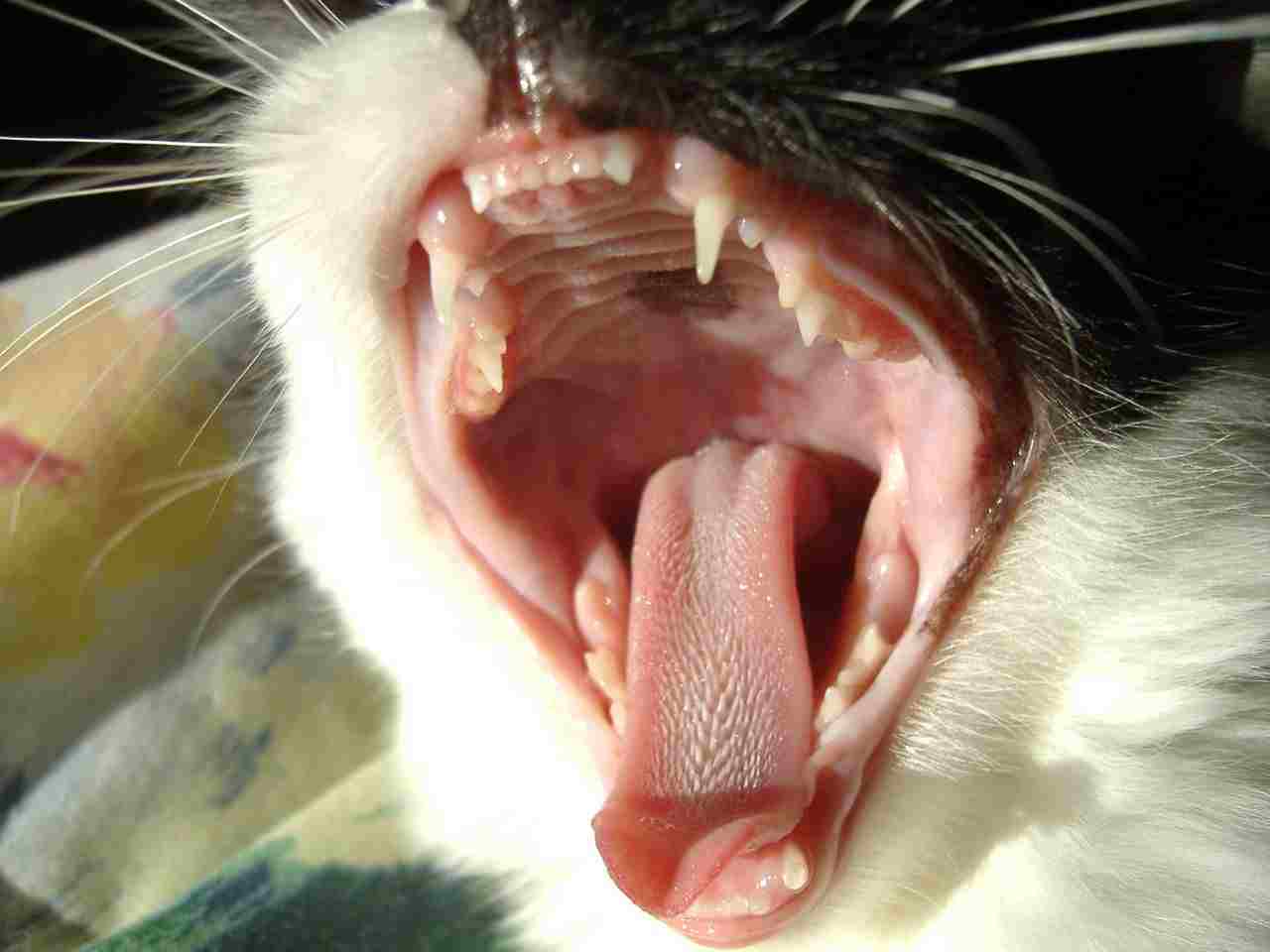
Tonkinese Cat:
Average bite force is not extensively documented but is generally lower compared to larger feline species.
Siamese Cat:
Similar to Tonkinese cats, the bite force is not extensively measured but is expected to be proportionate to their size.
Comparison: Both breeds possess bite forces suitable for their size, mainly adapted for prey capture and consumption.
Ecological Implications: Bite force adaptations may be linked to their primary mode of feeding in the wild, with efficiency in capturing and consuming prey.
10. Physical Offensive Advantages:
Tonkinese Cat:
Muscular build may provide enhanced agility and strength during play or hunting.
Siamese Cat:
Slim and agile body allows for quick movements, potentially advantageous in hunting.
Comparison: Tonkinese cats may have an advantage in physical strength, while Siamese cats excel in agility.
Ecological Implications: Varied physical advantages may suggest adaptations to different hunting strategies or prey types in their natural habitats.
11. Physical Defensive Advantages:
Tonkinese Cat:
Sturdy build and strong muscles may contribute to defensive capabilities.
Siamese Cat:
Quick reflexes and agility can aid in evading potential threats.
Comparison: Tonkinese cats may rely more on physical strength for defense, while Siamese cats utilize agility for evasion.
Ecological Implications: Defensive adaptations may reflect the types of predators or environmental threats each breed historically faced.
12. Speed (Km/hour or Mile/hour):
Tonkinese Cat:
Moderate speed, known more for agility than outright speed.
Siamese Cat:
Quick and agile, with a focus on rapid movements rather than top speed.
Comparison: Siamese cats are generally faster and more agile compared to the moderately paced Tonkinese cats.
Ecological Implications: Speed and agility adaptations may be linked to hunting techniques and environmental factors such as terrain.
13. Agility:

Tonkinese Cat:
Agile and capable of graceful movements, especially during play.
Siamese Cat:
Extremely agile, with the ability to jump great heights and land gracefully.
Comparison: Both breeds exhibit agility, but Siamese cats are renowned for their exceptional jumping and acrobatic skills.
Ecological Implications: Agility is crucial for navigating varied terrains and capturing prey, suggesting adaptations to diverse habitats.
14. Senses:
Tonkinese Cat:
Keen senses of sight and hearing.
Well-developed whiskers aid in navigation.
Siamese Cat:
Excellent vision, particularly in low light.
Acute sense of hearing and well-developed whiskers.
Comparison: Both breeds possess heightened senses, with Siamese cats known for exceptional low-light vision.
Ecological Implications: Enhanced senses are adaptive for hunting and navigating in various lighting conditions within their natural environments.
15. Overall Physical Capacity:
Tonkinese Cat:
Balanced and well-rounded physical capabilities.
Siamese Cat:
Emphasizes agility and sleek physique.
Comparison: Tonkinese cats have a more balanced physical capacity, while Siamese cats excel in specific areas such as agility.
Ecological Implications: Varied physical capacities may indicate adaptation to diverse ecological niches and hunting strategies.
16. Habitat Preference(s):
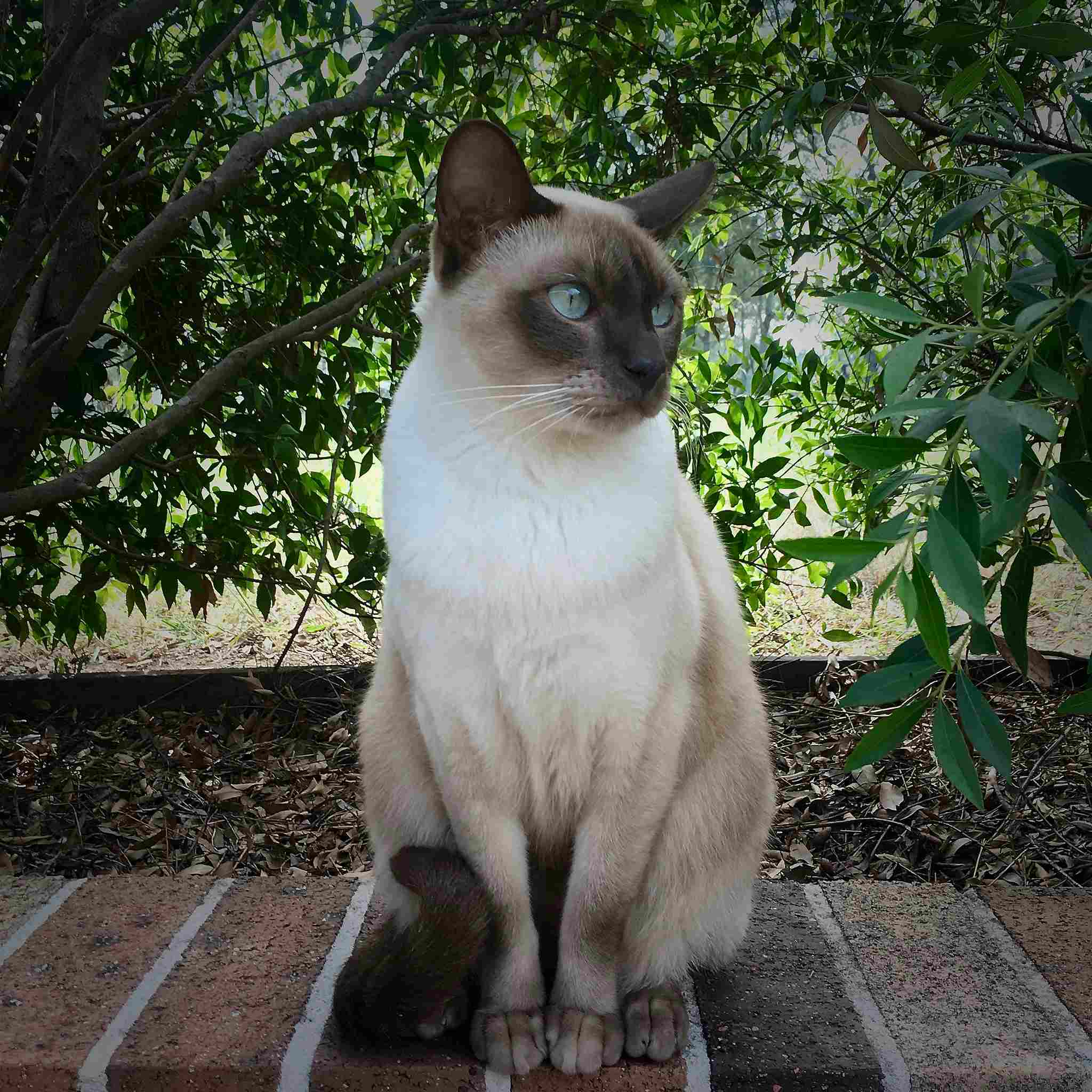
Tonkinese Cat:
Adaptable to various indoor environments.
Siamese Cat:
Prefers indoor living but may enjoy access to secure outdoor spaces.
Comparison: Both breeds are well-suited to indoor living, but Siamese cats may appreciate limited outdoor access.
Ecological Implications: Adaptation to living indoors suggests a historical association with human settlements, potentially reflecting the development of a mutualistic relationship.
17. Tracks:
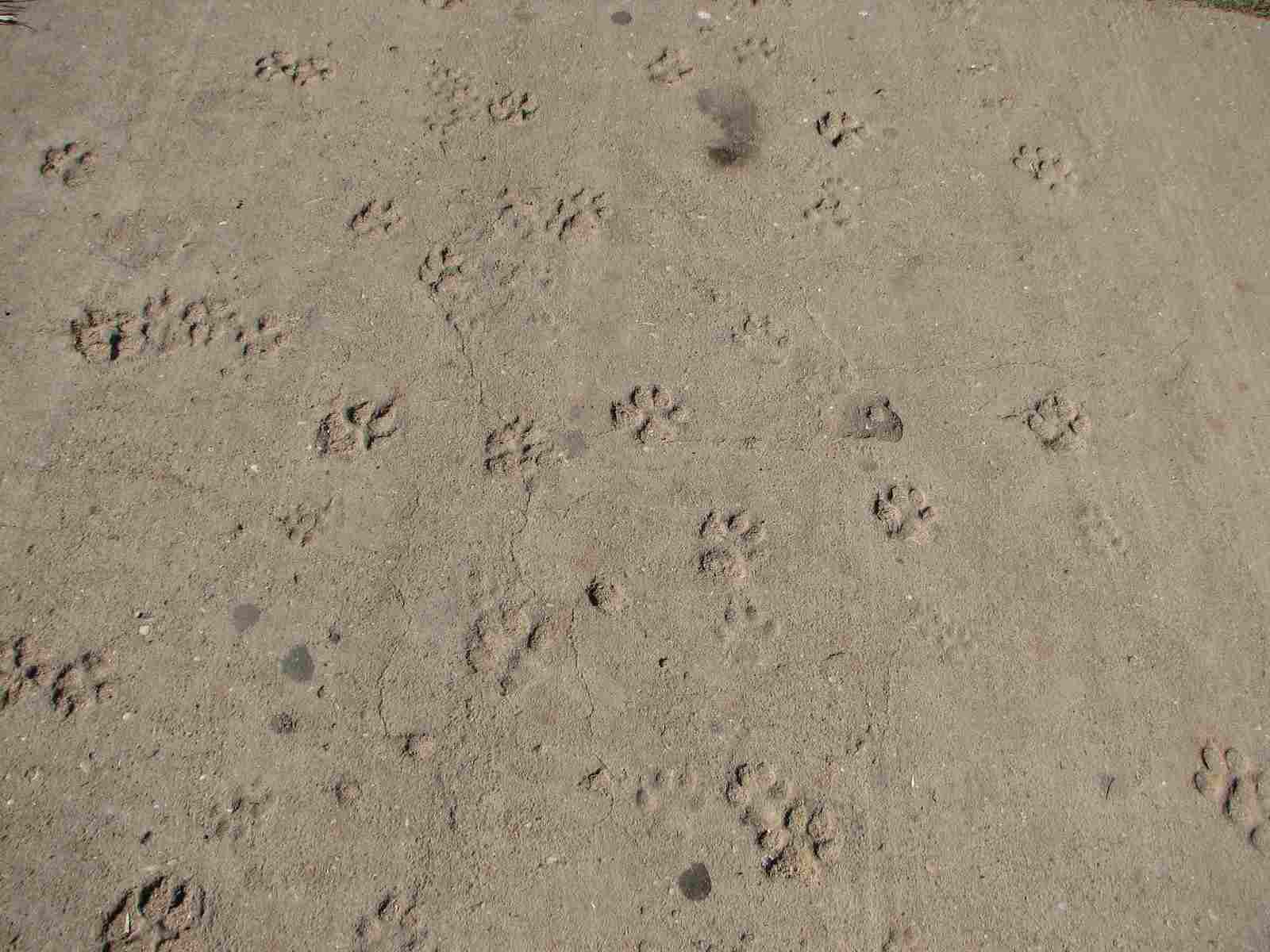
Tonkinese Cat:
Paw prints may show distinct claw marks and a broader base.
Siamese Cat:
Paw prints exhibit less distinct claw marks and a narrower base.
Comparison: Tonkinese cat tracks may show more pronounced claw marks compared to the more discreet prints of Siamese cats.
Ecological Implications: Claw marks in tracks may suggest different substrate preferences or adaptations related to hunting and climbing behaviors in their natural habitats.
18. Lifespan:
Tonkinese Cat:
Average lifespan ranges from 10 to 16 years, with proper care.
Siamese Cat:
Generally similar to Tonkinese cats, with an average lifespan of 12 to 16 years.
Comparison: Both breeds share a comparable lifespan, influenced by factors like genetics, diet, and overall healthcare.
Ecological Implications: Lifespan may be linked to survival strategies and reproductive patterns in their natural habitats.
19. Natural Mode of Feeding:
Tonkinese Cat:
Carnivorous diet, primarily consisting of meat.
Siamese Cat:
Carnivorous diet, with a preference for fresh meat.
Comparison: Both breeds have a natural inclination for a carnivorous diet, reflecting the typical feeding behavior of domestic cats.
Ecological Implications: Carnivorous feeding habits are adaptations to the hunting of small prey, maintaining energy balance in their native ecosystems.
20. Best Food as a Pet:
Tonkinese Cat:
High-quality cat food with a balance of protein and nutrients.
Siamese Cat:
Similar dietary requirements to Tonkinese cats, favoring high-quality cat food.
Comparison: Both breeds thrive on a diet rich in protein and essential nutrients, commonly provided through high-quality cat food.
Ecological Implications: Dietary preferences align with the carnivorous nature of domestic cats, reflecting adaptations to hunting in the wild.
21. Intelligence:
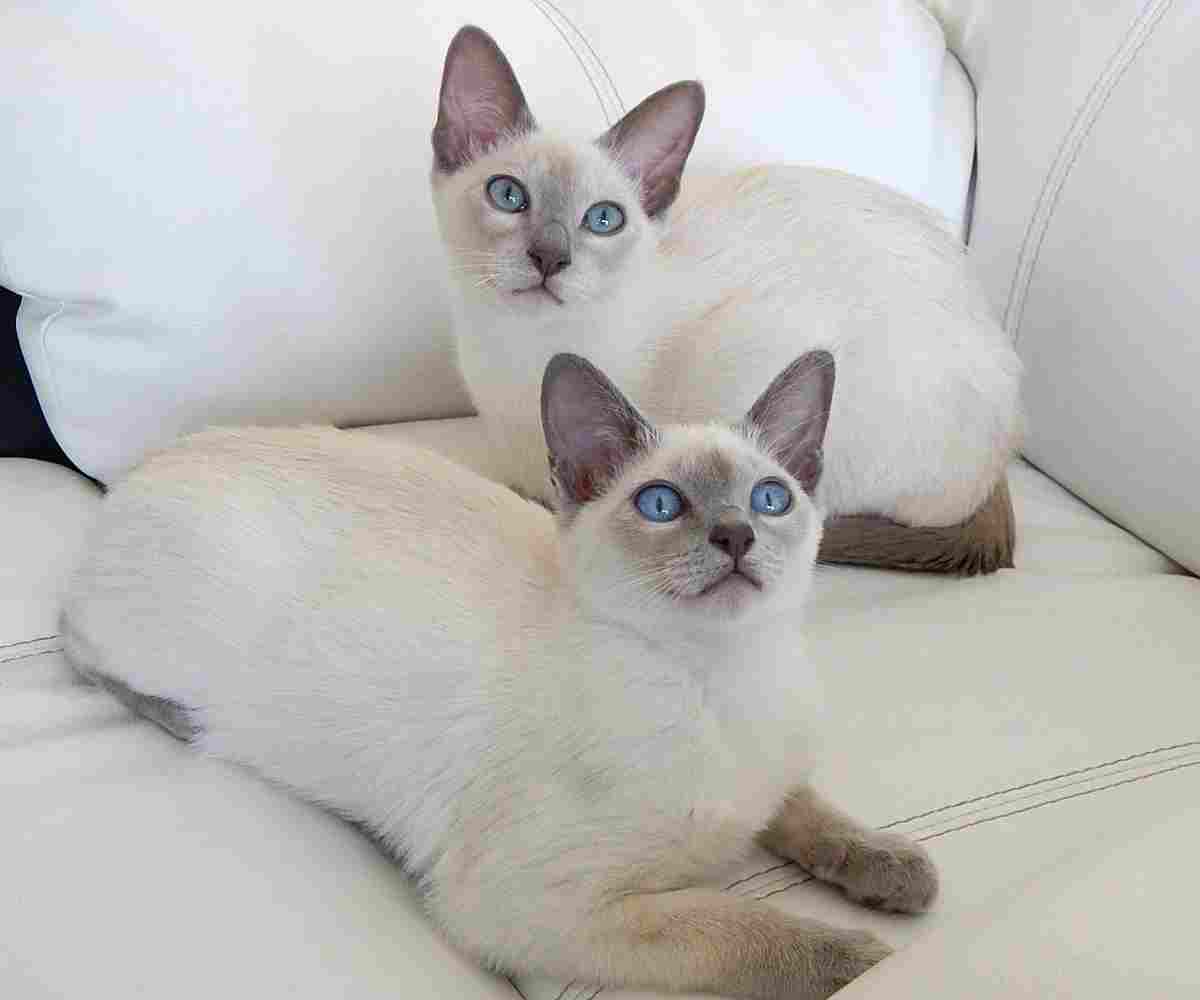
Tonkinese Cat:
Intelligent and known for problem-solving abilities.
Siamese Cat:
Highly intelligent, often displaying curiosity and a desire for mental stimulation.
Comparison: Both breeds are recognized for their intelligence, making them trainable and interactive companions.
Ecological Implications: Intelligence may have evolved as an adaptive trait for efficient hunting, problem-solving, and navigating their natural environments.
22. Social Behavior:
Tonkinese Cat:
Social and enjoys the company of humans and other pets.
May exhibit attachment behaviors towards specific family members.
Siamese Cat:
Highly social and forms strong bonds with owners.
Enjoys interaction and may become distressed when left alone.
Comparison: Both breeds share a high degree of social behavior, forming close bonds with their human companions.
Ecological Implications: Social behaviors may have evolved as a means of cooperative hunting or group living in their natural habitats.
23. Mode of Reproduction:
Tonkinese Cat:
Typically gives birth to litters of kittens.
Siamese Cat:
Similar reproductive pattern, giving birth to litters of kittens.
Comparison: Both breeds exhibit a similar mode of reproduction, with litters of kittens being the common outcome.
Ecological Implications: Reproductive patterns align with the evolutionary strategy of producing multiple offspring to increase the chances of survival.
24. Parental Behavior:
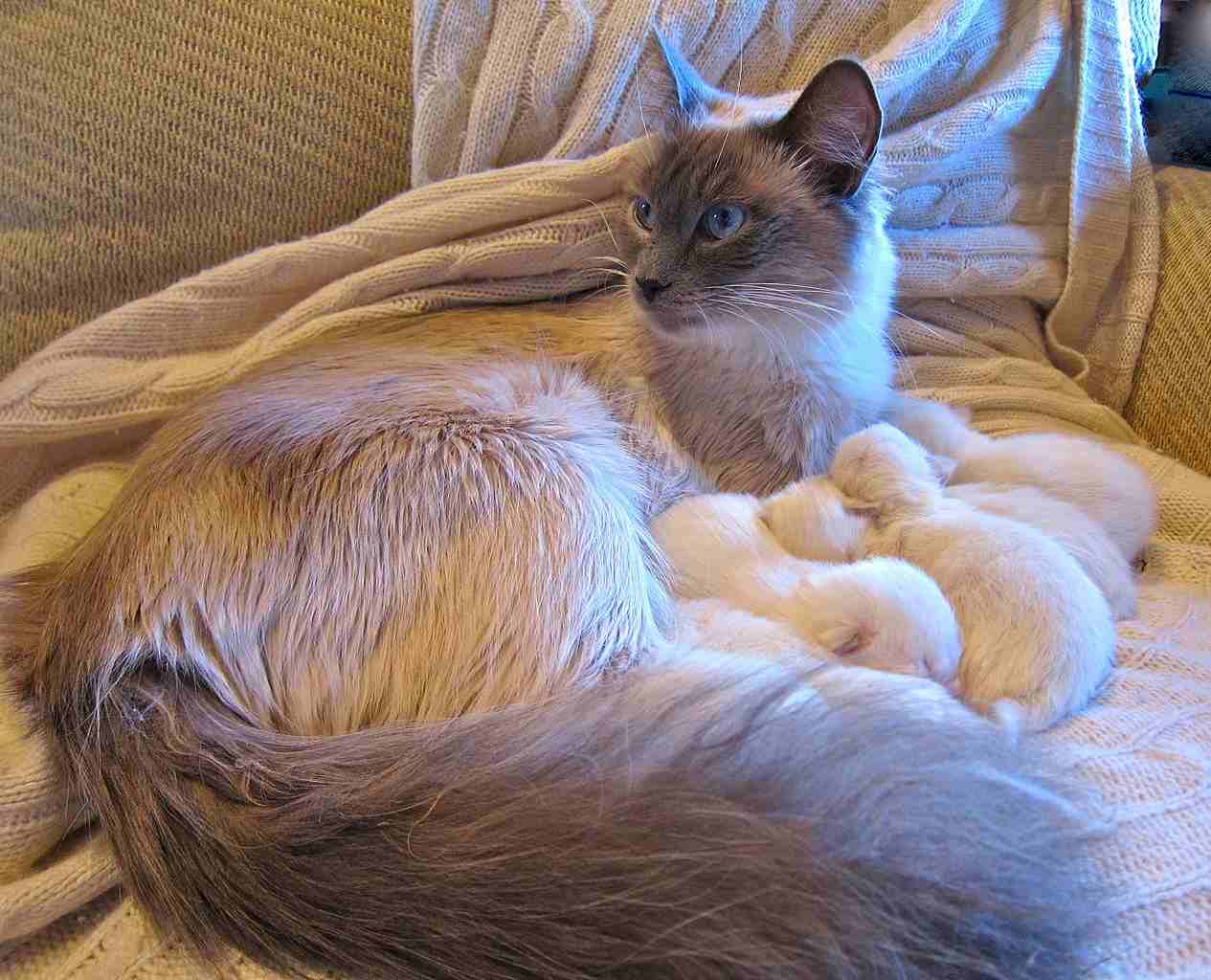
Tonkinese Cat:
Generally exhibits nurturing behavior towards kittens.
Siamese Cat:
Strong maternal instincts and actively cares for her kittens.
Comparison: Both breeds demonstrate nurturing and protective parental behaviors, ensuring the well-being of their offspring.
Ecological Implications: Parental behaviors contribute to the survival and development of kittens in the wild, enhancing their chances of reaching independence.
25. Proximity to Human-Inhabited Areas:
Tonkinese Cat:
Comfortable living in close proximity to humans.
Siamese Cat:
Also thrives in human-inhabited areas, enjoying interaction with family members.
Comparison: Both breeds are well-adapted to living in human-inhabited environments, showcasing a strong bond with their human companions.
Ecological Implications: The affinity for human proximity may have evolved as a mutually beneficial relationship, providing domestic cats with resources and protection in exchange for their companionship.
Summary of Comparison
I) Similarities:
Both Tonkinese and Siamese cats belong to the same taxonomic family, genus, and species (Felidae, Felis catus).
Similar grooming needs with low-maintenance short coats.
Comparable relative prices, influenced by factors like lineage and coat color.
Similar lifespan ranges, averaging from 10 to 16 years.
Carnivorous dietary preferences, thriving on high-quality cat food rich in protein.
Intelligent and highly social behaviors, forming strong bonds with human companions.
Similar modes of reproduction, giving birth to litters of kittens.
Comfortable living in close proximity to humans, exhibiting adaptability to human-inhabited areas.
II) Differences:
Appearance:
Tonkinese: Muscular build, medium-sized.
Siamese: Slender, long-bodied.
Size:
Tonkinese: Medium-sized with a sturdy build.
Siamese: Slender and elongated.
Weight:
Tonkinese: Heavier on average, ranging from 6 to 12 pounds.
Siamese: Generally lighter, ranging from 5 to 10 pounds.
Personality:
Tonkinese: Emphasis on playfulness and interaction.
Siamese: Emphasis on intelligence and craving human interaction.
Health Concerns:
Tonkinese: Prone to hypertrophic cardiomyopathy (HCM) and gingivitis.
Siamese: Susceptible to respiratory problems and dental issues.
Bite Force:
Tonkinese: Bite force not extensively documented.
Siamese: Bite force expected to be proportionate to size.
Physical Offensive Advantages:
Tonkinese: Emphasis on strength.
Siamese: Emphasis on agility.
Physical Defensive Advantages:
Tonkinese: Rely on physical strength.
Siamese: Rely on agility.
Speed:
Tonkinese: Moderate speed.
Siamese: Quick and agile.
Agility:
Tonkinese: Agile with graceful movements.
Siamese: Extremely agile with acrobatic skills.
Senses:
Tonkinese: Keen senses with well-developed whiskers.
Siamese: Excellent low-light vision and acute hearing.
Overall Physical Capacity:
Tonkinese: Balanced physical capacity.
Siamese: Emphasis on agility.
Habitat Preference(s):
Tonkinese: Adaptable to various indoor environments.
Siamese: Prefers indoor living but may enjoy limited outdoor access.
Tracks:
Tonkinese: Paw prints with distinct claw marks and a broader base.
Siamese: Paw prints with less distinct claw marks and a narrower base.

